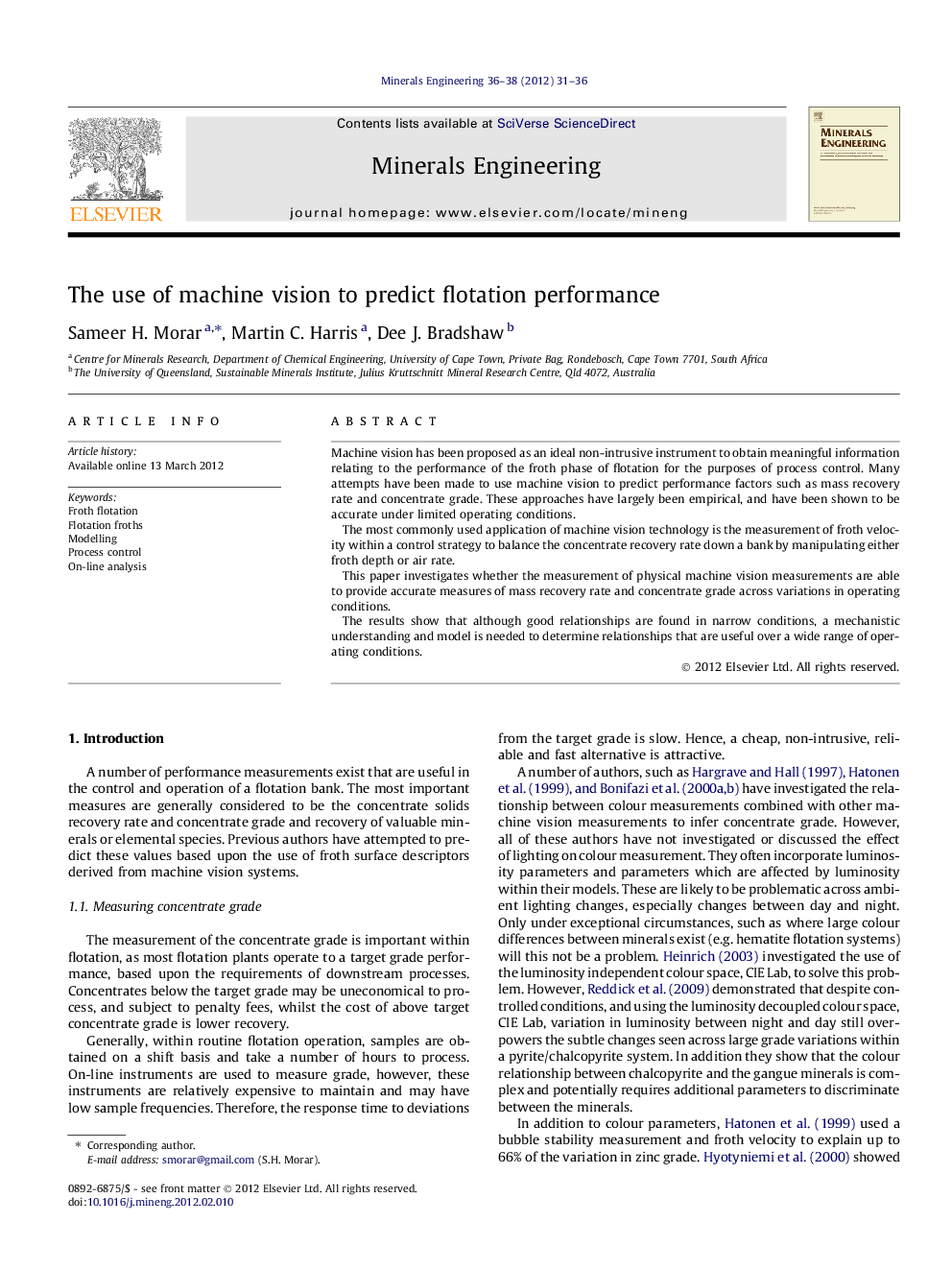| Article ID | Journal | Published Year | Pages | File Type |
|---|---|---|---|---|
| 233516 | Minerals Engineering | 2012 | 6 Pages |
Machine vision has been proposed as an ideal non-intrusive instrument to obtain meaningful information relating to the performance of the froth phase of flotation for the purposes of process control. Many attempts have been made to use machine vision to predict performance factors such as mass recovery rate and concentrate grade. These approaches have largely been empirical, and have been shown to be accurate under limited operating conditions.The most commonly used application of machine vision technology is the measurement of froth velocity within a control strategy to balance the concentrate recovery rate down a bank by manipulating either froth depth or air rate.This paper investigates whether the measurement of physical machine vision measurements are able to provide accurate measures of mass recovery rate and concentrate grade across variations in operating conditions.The results show that although good relationships are found in narrow conditions, a mechanistic understanding and model is needed to determine relationships that are useful over a wide range of operating conditions.
► Relationships between froth surface descriptors and performance were investigated. ► Significant factors relating to performance varied across different feed conditions. ► No universal link was found between froth surface descriptors and performance. ► Mechanistic understanding is required to interpret performance using machine vision.
